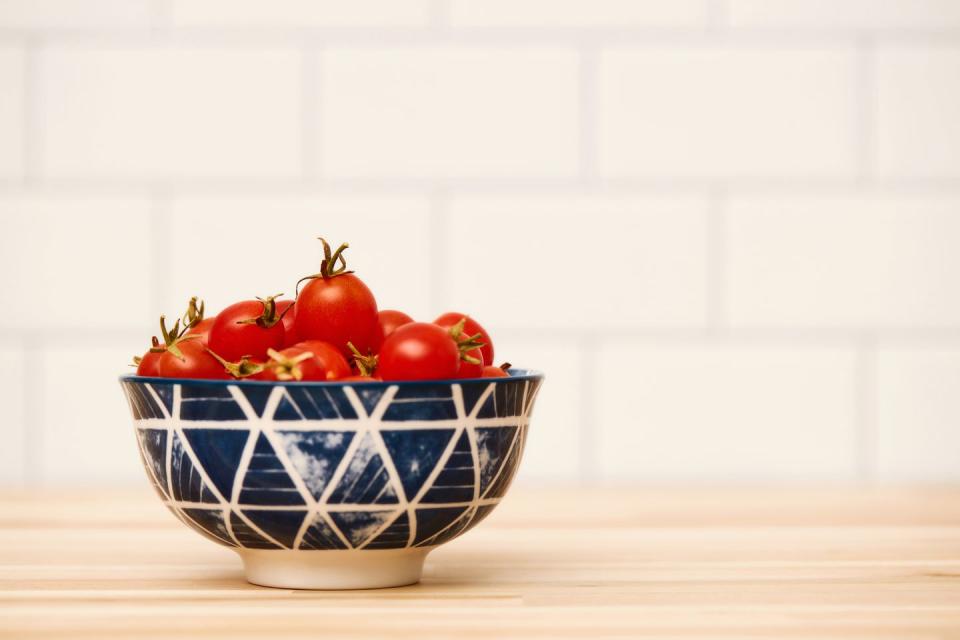
Step away from the medicine cabinet (who are we kidding, it’s 2023 — medicine box/drawer), it’s official: anti-inflammatory foods are the best route to reducing inflammation in the body.
What are the benefits of anti-inflammatory foods?
An anti-inflammatory diet calms your immune system when it reacts to something it perceives as foreign, such as pollen (oh hello, hayfever!). Or perhaps you notice your finger swelling or becoming red when you nick it while practicing your best Masterchef knife skills, which is the body dispatching white blood cells to the area to prevent bacteria from entering and infection. This is acute inflammation.
While inflammation works to protect your body from these pesky invaders, it can also stick around for longer — much longer, even when your heat is not under an immediate threat. This can be triggered when the body is trying to get rid of something, such as toxins from alcohol or smoking. Basically, the body starts to attack its own cells — which, as you can probably guess, is not something we want.
Long-term or chronic inflammation has been linked to many major diseases, from cancer and arthritis to depression and diabetes. Also to excess fat, particularly around the abdomen.
Even low-grade, it can cause damage to arteries, nerves and intestines.
Recent studies have shown that a diet high in anti-inflammatory foods can make a difference to healthy aging. As the researchers say: ‘we can use diet not only for nourishment, but also as medicine.’ Preach.
What are anti-inflammatory foods?
They are predominantly whole foods, minimally processed and containing heaps of good stuff — your nutrients, your antioxidants, which take on inflammation in the body (and win). Adding these to your diet involves minor changes and swaps, rather than major overhauls or cut-outs.
Fattyfish
Omega-3 is associated with lower levels of inflammation, but our bodies don’t produce it so it’s important to get it in your diet. As luck would have it, delicious fish like tuna, salmon and mackerel. Up your intake with a sushi lunch or healthy salad.
Dark leafy green vegetables and salad
Vitamin K, present in spinach, collard greens, broccoli, kale, cabbage, lettuce and asparagus, is known for its anti-inflammatory properties. Be conscious you need to get a good dose on the daily as a load-up day every now and then doesn’t have the same effects.
Berries
Infamously antioxidant-packed, berries also bring their A-game when fighting inflammation. They’re all good, but blueberries are particularly high in flavonoids.
Cherries
Nuh-uh, cherries are drupes, not berries — on this list for their proven dose of antioxidants and anti-inflammatory polyphenols and vitamin c.
Tomatoes
These little salad fruits — another shocker — pack a serious antioxidant punch, research suggests, with high levels of vitamin C, potassium and the antioxidant lycopene.

nuts
Walnut is the champ, studies show, with the most omega-3 and also alpha-linolenic acid (ALA) — which are both known anti-inflammatory agents.
Chia and flaxseeds
Also high in anti-inflammatory ALA, plus flavonoids, but arguably low in flavour, chia and flaxseeds can be a healthy addition to just about anything, from smoothies to salads.
Mushrooms
Think supplements, rather than omelette serving suggestions. Mushrooms such as Chaga, Cordyceps, Reishi and Lion’s Mane have been found to reduce inflammation in the body.

Turmeric
Though studies prove the inflammatory properties of turmeric, its superpowers have been praised for centuries, with it featuring traditional Ayurvedic medicine.
Coffee
Recent research has shown coffee may have anti-inflammatory properties, with regular drinkers seeing an increase in inflammatory marker levels when asked to cut it out for a month. However others have shown signs of increased inflammation so, whether it’s linked to genetics or other factors, it will need more research. For the meantime, the jury’s out on this one.
Olive oil
The reigning monarch of the widely-lauded Mediterranean Diet, olive oil is high in antioxidants — particularly oleocanthal, which studies show has similar effects to ibuprofen.

Green tea
Green tea is particularly high in EGCG, the most powerful type of catechins, an antioxidant that’s shown to be fire at cooling inflammation.
Avocados
Though not squeaky clean sustainability-speaking, avocado is punchy at calming the body’s inflammatory response due to high levels of monounsaturated fat, a type of healthy fat, and antioxidants — potentially even able to correct less healthy food choices.
Cruciferous vegetables
Cruciferous vegetables, such as broccoli, cauliflower, cabbage, kale and watercress, contain sulforaphane (SFN), an isothiocyanate compound that protects from inflammation and oxidative stress.
And last but not least, don’t forget to stay hydrated. That’s right: the good old-fashioned H20 keeps things running smoothly by flushing toxins out of your body.
And what to avoid?
Most inflammatory foods probably won’t come as a surprise to you — they’re the types we’re told to eat in moderation (or, basically, to avoid): refined grains, such as white bread and pasta, refined sugar, salt , red and processed meat, like hot dogs, cured meats and bacon, alcohol, and junky snacks that contain trans fats… crisps, cookies, margarine, frozen pizza and donuts. We know, shocker right.
You Might Also Like
